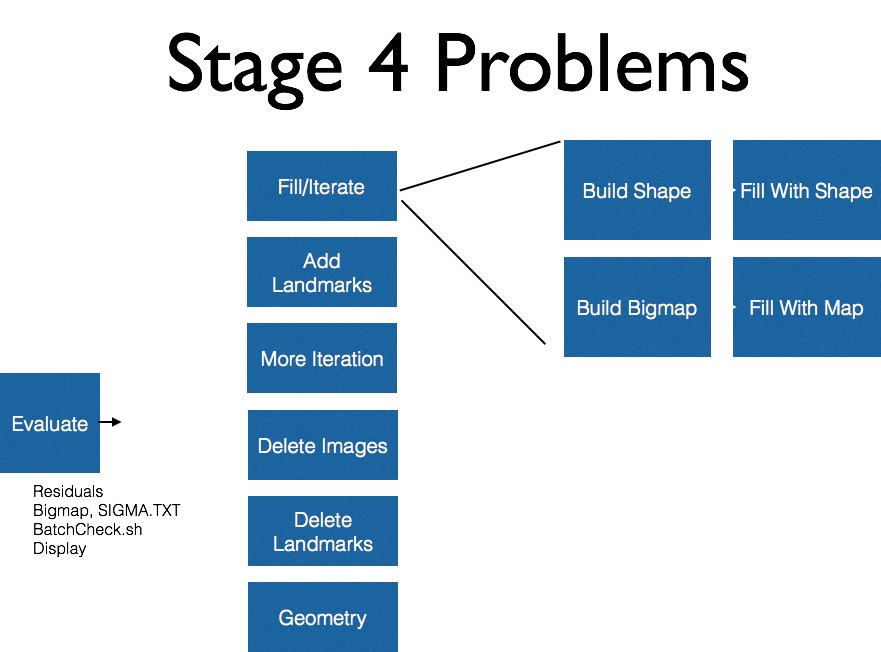|
Size: 749
Comment:
|
Size: 1055
Comment:
|
| Deletions are marked like this. | Additions are marked like this. |
| Line 4: | Line 4: |
| Image of thing to try | Image of thing to try: |
| Line 26: | Line 27: |
| four main types of outputs are: | The Four main types of find_nofit outputs are: |
| Line 31: | Line 33: |
All errors are worth recording, but the only output from find_nofit that warrants serious concern is *. Whenever a * is present in the find_nofit output the landmark that * is associated with must be fixed. To fix bad land marks [[lithos.e|lithos]] is used in the working directory. |
Fixing Landmarks
Image of thing to try:

Description
At the end of each tiling or iteration, a form of find_nofit (T or P) is used to check for bad landmarks.
A common find_nofit output will look soemthing like this:
EQ0004: cat 004.OOT EP0002: cat 005.OOT EP0003: cat 006.OOT EO0003: cat 007.OOT EN0003: * cat 008.OOT EN0004: * cat 009.OOT EM0003: . cat 010.OOT EM0004: * cat 011.OOT 132 deleted ! cat 132.OOTThe
The Four main types of find_nofit outputs are:
- ! - the landmark was deleted
- . - the landmark has overlaps
- (space) - the landmark has minor error (don't worry about it).
- * - the landmark has a major error and must be fixed.
All errors are worth recording, but the only output from find_nofit that warrants serious concern is *. Whenever a * is present in the find_nofit output the landmark that * is associated with must be fixed. To fix bad land marks lithos is used in the working directory.
